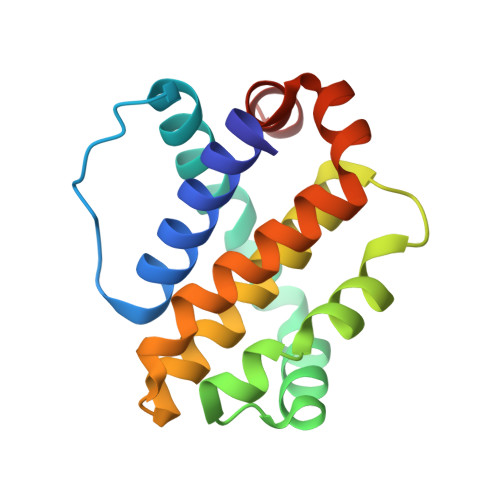Discovery of potent myeloid cell leukemia 1 (Mcl-1) inhibitors using fragment-based methods and structure-based design.
Friberg, A., Vigil, D., Zhao, B., Daniels, R.N., Burke, J.P., Garcia-Barrantes, P.M., Camper, D., Chauder, B.A., Lee, T., Olejniczak, E.T., Fesik, S.W.(2013) J Med Chem 56: 15-30
- PubMed: 23244564
- DOI: https://doi.org/10.1021/jm301448p
- Primary Citation of Related Structures:
4HW2, 4HW3, 4HW4 - PubMed Abstract:
Myeloid cell leukemia 1 (Mcl-1), a member of the Bcl-2 family of proteins, is overexpressed and amplified in various cancers and promotes the aberrant survival of tumor cells that otherwise would undergo apoptosis. Here we describe the discovery of potent and selective Mcl-1 inhibitors using fragment-based methods and structure-based design. NMR-based screening of a large fragment library identified two chemically distinct hit series that bind to different sites on Mcl-1. Members of the two fragment classes were merged together to produce lead compounds that bind to Mcl-1 with a dissociation constant of <100 nM with selectivity for Mcl-1 over Bcl-xL and Bcl-2. Structures of merged compounds when complexed to Mcl-1 were obtained by X-ray crystallography and provide detailed information about the molecular recognition of small-molecule ligands binding Mcl-1. The compounds represent starting points for the discovery of clinically useful Mcl-1 inhibitors for the treatment of a wide variety of cancers.
- Department of Biochemistry, Vanderbilt University School of Medicine, 2215 Garland Avenue, 607 Light Hall, Nashville, Tennessee 37232-0146, USA.
Organizational Affiliation:

















